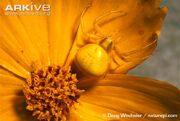The living world represents a host of complex interconnections that are constantly changing. These changes influence different species in a variety of ways. One of the most profound influences of change is natural selection. This evolutionary process seeks specific heritable changes in reproductive output in order to increase the ability for a species to survive from one generation to the next, in many cases these changes are indirect responses to survival in particular environments (Gregory, 2009). The connections between species are a driving factor in evolutionary changes since the survival of one species is tied to the species of another. These connections are vital to understand when examining the difference between species that have had the opportunity to coevolve over time versus a species that is non native and is introduded.
Gregory, T. R. (2009). Understanding natural selection: essential concepts and common misconceptions. Evolution: Education and Outreach, 2(2), 156-175.
Non-native species introduction[]
The evolutionary puzzle has so many interesting layers to consider such as how the length of time that different species have interacted within the same environment can impact the survival of a species. There is a significant difference between the co-evolution of species that have been together over an extended period of time verses a species that is introduced. A prime example of this is the difference between the relationship between the Australian crab spider and European honeybees (non-native) versus the Australian crab spi

Australian crab spider
der and Australian bees (native). Approximately 200 years ago the European honeybee was brought to Australia which means that they did not co-evolve with the Australian crab spider. As a result, the European honeybee does not perceive and therefore avoid spider occupied flowers as often as the Australian bee (Heiling & Herberstein, 2004). Of course this is just one small example but it shows some disadvantages to introducing a new species into an established ecosystem.
Heiling, A. M., & Herberstein, M. E. (2004). Predator-prey coevolution: Australian native bees avoid their spider predators. Proceedings Of The Royal Society B: Biological Sciences, 271(SUPPL. 4), S196-S198.
Section heading[]
Write the second section of your page here.